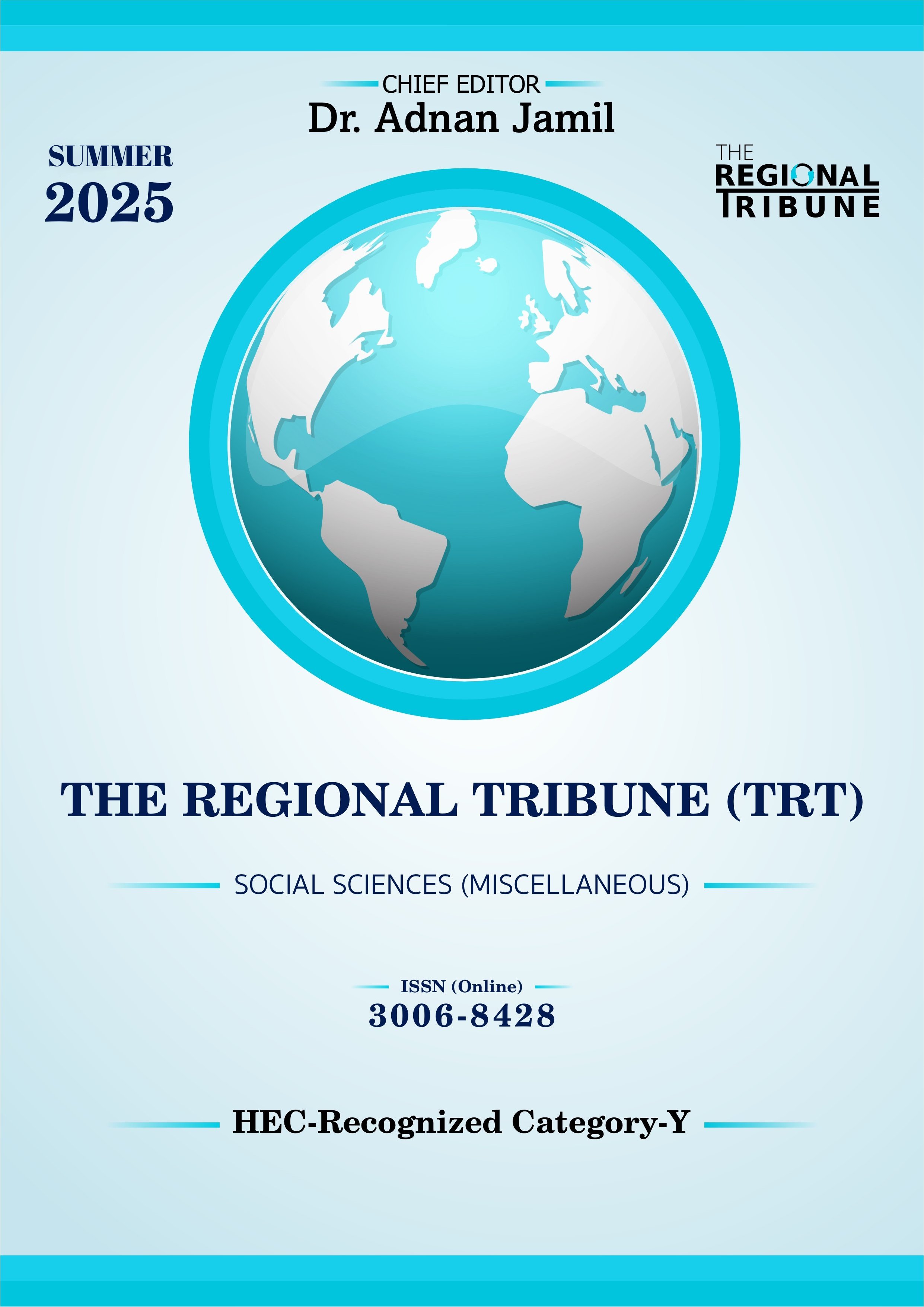A Semantic-Pragmatic Analysis of the English Translation of an Urdu Play Kuch Ankahi
DOI:
https://doi.org/10.55737/trt/SR25.132Keywords:
Translation, Pragmatic Meanings, Semantic Meanings, Cultural Specific ExpressionsAbstract
The subtitling of idioms, metaphors, and humor presents significant translation challenges, often requiring compromises between semantic clarity and cultural authenticity. This study examines the transfer of semantic and pragmatic meanings employed in the English subtitles of the culturally rich Urdu television play Kuch Ankahi, written by Syed Mohammad Ahmed, focusing on the accuracy of meaning and cultural features during translation. Using a qualitative approach, this study analyzes selected dialogue pairs to explore how meanings are generalized or specified deliberately. These choices are evaluated not only for their effectiveness in maintaining the core meaning of the source text (ST) but also on how they influence the tone, emotional impact, and cultural expressiveness of the dialogues when translated into the target text (TT). By using Baker’s (1992) proposed strategies for translating culture-specific items and Sperber and Wilson’s (1986) relevance theory, the study aims to determine whether the applied strategies enhance or limit the precision of the subtitles. The results indicate that most of the meanings are generalized, which enhances clarity and semantic transparency but often diminishes the aesthetic tone, humor, cultural richness, and emotional subtlety of the original text.
References
Akram, N. & Yasmin, M. (2023). Sexual violence against women: Global interventions and evidence from Pakistan. Women’s Studies International Forum, 97, 1-8. https://doi.org/10.1016/j.wsif.2023.102691
Arhire, M. (2020). Explicitation, simplification and neutralisation in the translation of reference. Journal of Linguistic and Intercultural Education, 13(2), 5–20. https://doi.org/10.29302/jolie.2020.13.2
Baker, M. (1992). In other words: A coursebook on translation. Routledge.
Baker, M. (2018). In other words: A coursebook on translation (3rd ed.). Routledge.
Catford, J. C. (1965). A linguistic theory of translation. Oxford University Press.
Gottlieb, H. (1992). Subtitling: A new university discipline. In C. Dollerup & A. Loddegaard (Eds.), Teaching translation and interpreting: Training, talent and experience (pp. 161–170). John Benjamins.
Irshad, I. & Yasmin, M. (2023). Translating harassment: cross cultural reconstruction of the feminist identity in Translated Fiction. Humanities and Social Sciences Communications, 10(1), 1-10. https://doi.org/10.1057/s41599-023-02306-5.
Irshad, I. & Yasmin, M. (2022). Translating Eloped Women: A Critical Analysis of the Selected English Translations of Urdu Novel Aangan by Mastoor. Asia Pacific Translation and Intercultural Studies, 9(3). https://doi.org/10.1080/23306343.2022.2133310.
Larson, M. L. (1998). Meaning-based translation: A guide to cross-language equivalence (2nd ed.). Lanham. University Press of America.
Moe, M. (2010). Styling popular fiction: A comparison of stylistic shifts in Slovene translations of popular fiction and literary prose. Paper presented at the IV Congreso Internacional de la Sociedad Española de Estudios Literarios de Cultura Popular, Mallorca, Spain.
Newmark, P. (1981). Approaches to translation. Oxford: Pergamon Press.
Newmark, P. (1988). A textbook of translation. Prentice Hall.
Nida, E. A. (1984). Rhetoric and styles: A taxonomy of structures and functions. Language Sciences, 6(2), 287–305. https://doi.org/10.1016/S0388-0001(84)80021-2
Nida, E. A., & Taber, C. R. (1974). The theory and practice of translation. Brill.
Pedersen, J. (2011). Subtitling norms for television: An exploration focusing on extralinguistic cultural references. John Benjamins.
Safdar, M. Yasmin, M. (2021a). Redefining Pakistani Muslim wifehood in Hamid’s and Shamsie’s fiction. Cogent Arts and Humanities, 8(1), 1-15. https://doi.org/10.1080/23311983.2021.2001158
Safdar, M. Yasmin, M. (2021b). Muslim Female Subjectivity in Mohsin Hamid’s How to Get Filthy Rich in Rising Asia: Disrupting the Binary of the Religious and the Secular in Pakistan. Journal of Gender Studies. 31(6), 701–711. https://doi.org/10.1080/09589236.2021.1930523
Saleem, T., Yasmin, M., & Saleem, A. (2021). Linguistic politeness of Pakistani English and British English speakers: Culture and gender perspectives. Cogent Arts & Humanities, 8(1), 1996917. https://doi.org/10.1080/23311983.2021.1996917
Sperber, D., & Wilson, D. (1986). Relevance: Communication and cognition. Harvard University Press.
Sperber, D., & Wilson, D. (1995). Relevance: Communication and cognition (2nd ed.). Blackwell.
Sukarini, N. W., Yadnya, I. B. P., Puspani, I. A. M., & Indrawati, N. L. K. M. (2022). Deculturalization of Culturally Bound Meaning: Indonesian-English Translation Evidence. Journal of Language Teaching and Research, 13(6), 1332-1340. https://doi.org/10.17507/jltr.1306.22
Sun, X. (2022). Neutralising tendency in subtitling Chinese culture-specific references into English. International Journal of Chinese and English Translation & Interpreting, 2(1), 1–15. http://dx.doi.org/10.56395/ijceti.v2i2.45
Wu, S. (2021). Subtitling swear words from English into Chinese: A corpus-based study of Big Little Lies. Open Journal of Modern Linguistics, 11(2), 277–292. https://doi.org/10.4236/ojml.2021.112022
Vinay, J.-P., & Darbelnet, J. (1995). Comparative stylistics of French and English: A methodology for translation (J. C. Sager & M.-J. Hamel, Trans.). John Benjamins.
Yasmin, M., Naseem, F. & Sohail, A. (2019). Religious and Socio-cultural Influences on the Pakistani Wedding Invitation. Open Linguistics, 5, 354–368. https://doi.org/10.1515/opli-2019-0019
Downloads
Published
Issue
Section
License

This work is licensed under a Creative Commons Attribution-NonCommercial 4.0 International License.



